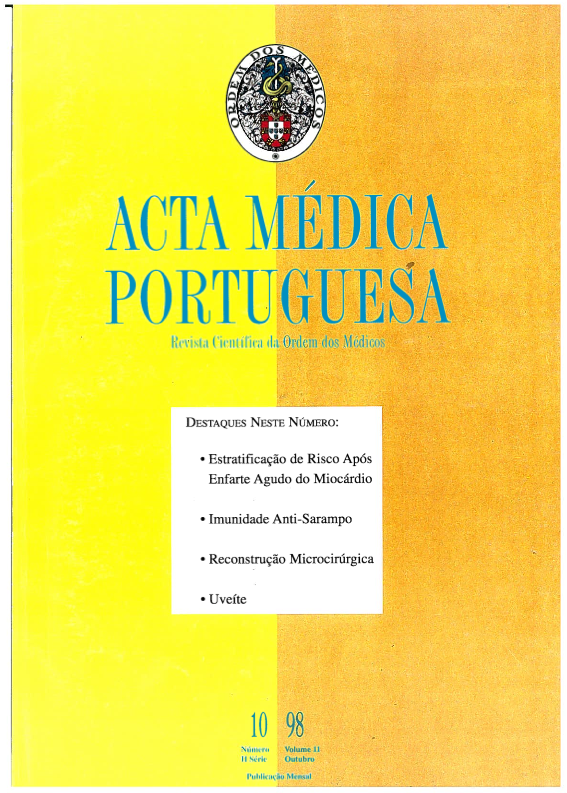Value of exercise test for risk stratification acute myocardial infarction.
DOI:
https://doi.org/10.20344/amp.2337Abstract
To assess the prognostic value of predischarge exercise testing (ET) in patients hospitalized for acute myocardial infarction (AMI).Department of Cardiology in a reference hospital for Interventional CardiologyBetween January 1990 and December 1994, 178 patients hospitalized for AMI were discharged and referred to the outpatient clinic (mean follow up, 1049 +/- 612 days). Eighty-two percent of these patients were men, mean age--56 +/- 12 years. Patients that did not perform predischarge ET (Group A, n 77) were retrospectively compared with those who did (Group B, n = 101). In relation to demographic and clinical characteristics; we analysed cardiac events (CE) and death during the first 18 months after discharge in both groups. In group B patients, we studied the relation of ET parameters (duration of exercise, occurrence of exercise-induced ischaemia and arrhythmias, maximum heart rate, blood pressure response, rate pressure product and severity score) to CE and death during the first 18 months after AMI.The proportion of patients aged 70 years or older was greater in group A (23% vs 3%, P < 0.001). In this group, there was a greater prevalence of recurrent ischaemia (51% vs 29%, P < 0.001) and left ventricular dysfunction (42% vs 25%, P < 0.05). Group A patients were also submitted to less thrombolysis (45% vs 62%, P < 0.05) and to revascularization procedures (25% vs 41%, P < 0.05). In group B patients, the incidence of CE did not differ with respect to duration of ET, rate pressure product or maximum heart rate. Incidence of CE was greater in patients with exercise-induced ischaemia (38% vs 15%, P < 0.05), severity score > 2 (45% vs 18%, P < 0.02) and inadequate rise (< 30 mmHg) in systolic blood pressure (39% vs 13%, P < 0.02). The total incidence of CE and revascularization was also greater in patients with exercise-induced ischaemia (88% vs 49%, P < 0.001), severity score > 2 (95% vs 56%, P < 0.02) and inadequate rise in systolic blood pressure (93% vs 45%, P < 0.001).In patients without indication for ET as part of risk stratification after AMI, clinical characteristics were more severe as defined by age greater than 70 years, residual ischaemia and left ventricular dysfunction. Patients that performed ET had smaller risk, except when presenting exercise-induced ischaemia, severity score > 2 and inadequate rise in systolic blood pressure.Downloads
Downloads
How to Cite
Issue
Section
License
All the articles published in the AMP are open access and comply with the requirements of funding agencies or academic institutions. The AMP is governed by the terms of the Creative Commons ‘Attribution – Non-Commercial Use - (CC-BY-NC)’ license, regarding the use by third parties.
It is the author’s responsibility to obtain approval for the reproduction of figures, tables, etc. from other publications.
Upon acceptance of an article for publication, the authors will be asked to complete the ICMJE “Copyright Liability and Copyright Sharing Statement “(http://www.actamedicaportuguesa.com/info/AMP-NormasPublicacao.pdf) and the “Declaration of Potential Conflicts of Interest” (http:// www.icmje.org/conflicts-of-interest). An e-mail will be sent to the corresponding author to acknowledge receipt of the manuscript.
After publication, the authors are authorised to make their articles available in repositories of their institutions of origin, as long as they always mention where they were published and according to the Creative Commons license.









